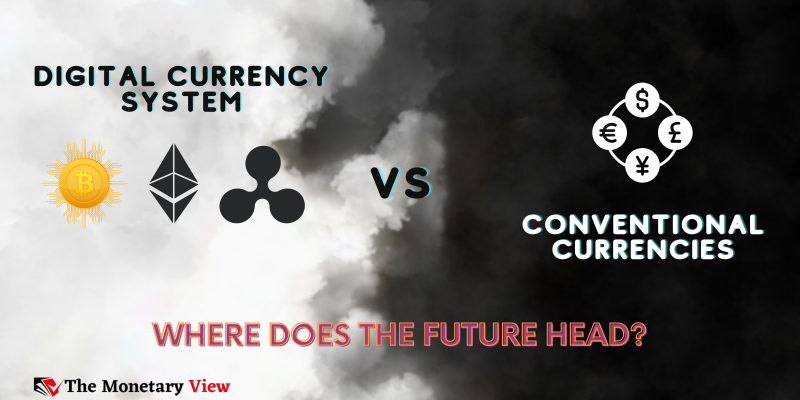The comparison between digital currency systems and conventional (fiat) currencies is a crucial topic, as it offers insights into the future of money and financial systems. Let’s explore the key differences and potential future trends in this regard.
Digital Currency System:
- Decentralization: Many digital currency systems, like Bitcoin and other cryptocurrencies, operate on decentralized, blockchain-based networks. They don’t rely on a central authority like a government or central bank for issuance and regulation.
- Global and Borderless: Digital currencies are accessible to anyone with an internet connection, making them truly global and borderless. They transcend geographical limitations and can be sent and received worldwide.
- Transparency and Security: Blockchain technology ensures transparency and immutability of transactions, making it difficult to alter or counterfeit transaction history.
- Low Transaction Costs: Digital currencies often have lower transaction fees compared to traditional banking systems, especially for cross-border transactions.
- Financial Inclusion: Digital currencies have the potential to bring financial services to underserved populations, as they can be accessed with just a smartphone and an internet connection.
- Privacy Concerns: While blockchain transactions are transparent, the level of anonymity can vary. Some digital currencies prioritize privacy, while others are more transparent.
- Volatility: Many digital currencies are known for their price volatility, which can be a challenge for those seeking stability.
Conventional Currencies:
- Centralized Control: Conventional currencies are issued and regulated by central authorities, such as central banks and governments. They have the power to influence monetary policy and money supply.
- Legal Tender: Fiat currencies are recognized as legal tender within their respective countries, and they are required for tax payments, making them widely accepted for transactions.
- Stability: Conventional currencies are generally more stable in value compared to many digital currencies. This stability is a desirable feature for day-to-day transactions and savings.
- Regulation and Consumer Protections: Conventional financial systems are subject to extensive regulatory frameworks that aim to protect consumers, maintain financial stability, and prevent illicit activities.
- High Transaction Costs: Cross-border transactions and currency exchange often incur significant fees and delays in the traditional financial system.
Future Trends:
- Hybrid Systems: The future may see a coexistence of digital and conventional currencies. Central banks in various countries are exploring the issuance of central bank digital currencies (CBDCs), which aim to combine the benefits of digital currencies with the stability and regulatory oversight of fiat.
- Increased Adoption: Digital currencies are likely to see increased adoption for international remittances, online payments, and as an alternative store of value.
- Regulation: As digital currencies become more mainstream, governments and regulatory bodies are expected to introduce more comprehensive and clear regulations to ensure consumer protection and financial stability.
- Integration with Traditional Finance: The integration of digital currencies into traditional financial systems, such as stock markets and banking services, is expected to grow.
- Technological Advancements: Ongoing technological developments, such as scalability solutions and enhanced security measures, will impact the future of digital currencies.
In conclusion, the future of currency systems is likely to be a complex interplay between digital and conventional currencies. Digital currencies offer many advantages, such as decentralization and global accessibility, while traditional currencies provide stability and legal backing. Hybrid systems and regulatory frameworks will likely evolve to strike a balance between innovation and consumer protection in the changing financial landscape. The precise path that the future takes will depend on technological developments, regulatory decisions, and societal acceptance.







